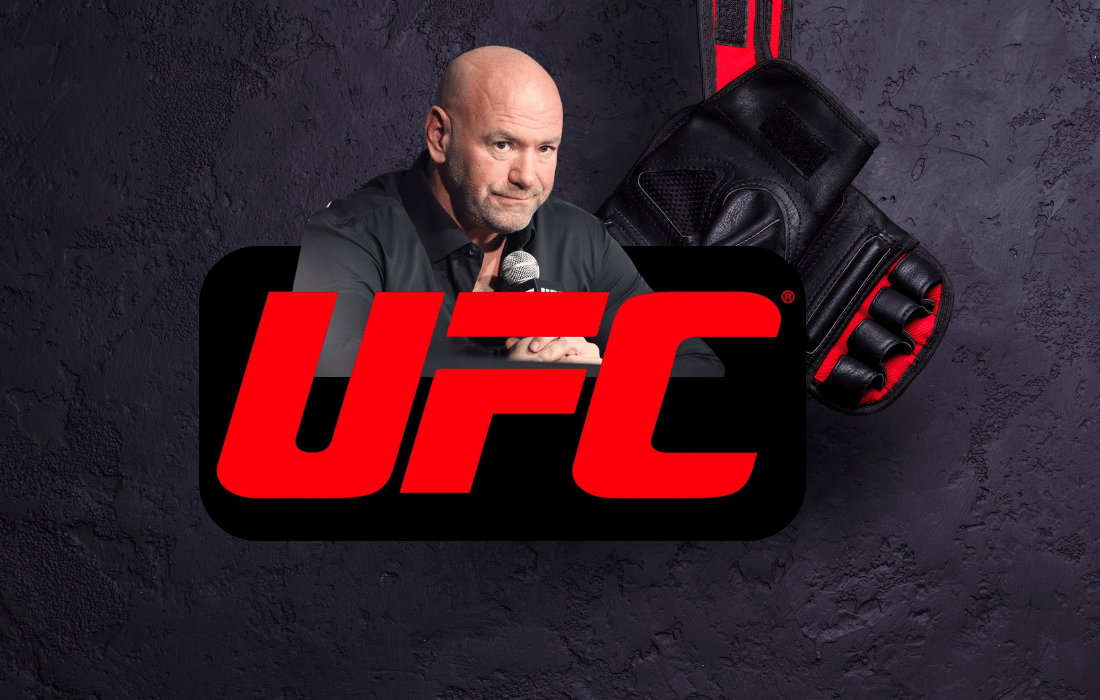For a long time, the Ultimate Fighting Championship (UFC) was dismissed as too violent, too chaotic, and far too raw for mainstream legitimacy. Labeled “human cockfighting” by senators and journalists alike, the organization hovered on the edge of extinction more than once. And yet, in just over three decades, the UFC has transformed from a lawless underground spectacle into a billion-dollar, globally recognized sports juggernaut.
So, how exactly did this happen? The answer lies in a mixture of bold entrepreneurship, smart regulation, and a cultural moment that demanded something real.
This is the remarkable story of how the UFC grew from its outlaw origins into one of the fastest-growing sports in the world.
The Birth of a Wild Experiment
The UFC was born in 1993 out of a simple question: which martial art is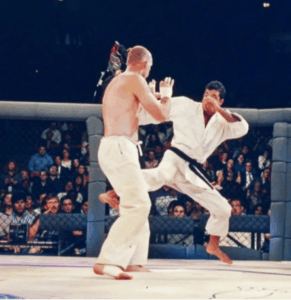 the most effective in a real fight? That question was posed by Art Davie, a businessman and fight promoter, and Rorion Gracie, a Brazilian jiu-jitsu master who wanted to showcase his family’s fighting style to the world.
the most effective in a real fight? That question was posed by Art Davie, a businessman and fight promoter, and Rorion Gracie, a Brazilian jiu-jitsu master who wanted to showcase his family’s fighting style to the world.
Their solution? Create a one-night tournament featuring fighters from different backgrounds – karate, wrestling, boxing, jiu-jitsu – with no weight classes, no rounds, and barely any rules.
UFC 1, held in Denver, Colorado, was a chaotic, unforgettable mess. A 175-pound Royce Gracie tapped out larger opponents with ease, exposing the effectiveness of ground fighting to an audience that had, for the most part, only ever seen stand-up boxing. But while the martial arts world was fascinated, politicians were horrified.
The lack of rules and safety measures led to a PR nightmare. Senator John McCain famously called it “human cockfighting” and led a campaign to ban the UFC from pay-per-view and many U.S. states. Within just a few years, the UFC was hanging on by a thread.
The Brink of Collapse
By the late 1990s, the UFC was banned in 36 states. Pay-per-view distributors had dropped the brand. Financial losses were mounting. The public image was abysmal. The promotion was being kept alive by hardcore fans and fringe martial arts circles, but it wasn’t even close to breaking even.
In short, the UFC was dying – and nobody thought it was worth saving.
Nobody, except for a pair of Las Vegas casino magnates and a brash, fast-talking boxing manager named Dana White.
Enter the Fertitta Brothers and Dana White
In 2001, brothers Lorenzo and Frank Fertitta III — owners of Station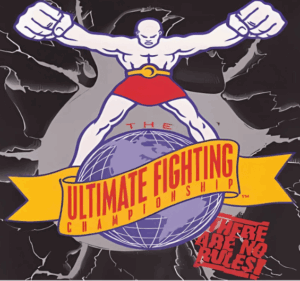 Casinos and deeply embedded in Nevada’s gambling and regulatory industries — bought the UFC for a measly $2 million. It was a laughably low price, but also a massive gamble. They had one condition: their childhood friend Dana White would be installed as UFC President.
Casinos and deeply embedded in Nevada’s gambling and regulatory industries — bought the UFC for a measly $2 million. It was a laughably low price, but also a massive gamble. They had one condition: their childhood friend Dana White would be installed as UFC President.
This trio would change everything.
Lorenzo’s experience on the Nevada State Athletic Commission allowed him to guide the sport toward regulation. They knew the UFC had to be cleaned up, rebranded, and legitimized – or it was finished. Together, the Fertittas and White pumped tens of millions of dollars into the organization while making no profit for years.
A Professional Makeover
The first step was to create structure: The UFC worked with athletic commissions to establish the Unified Rules of Mixed Martial Arts, which introduced weight classes, time limits, rounds, banned and dangerous techniques, and standardized judging.
This transformation was vital. It allowed the UFC to get sanctioned in states like New Jersey and Nevada, and it gave MMA a fighting chance at mainstream acceptance. The public still saw it as brutal, but it was no longer unregulated. It was slowly becoming a legitimate sport.
Still, even with new rules and smarter branding, the UFC continued to hemorrhage money. That is, until one hail mary television project changed everything.
The Ultimate Fighter and a Do-Or-Die Moment
In 2005, the UFC launched The Ultimate Fighter, a reality TV series on Spike TV featuring up-and-coming fighters living together, training, and competing for a UFC contract. The Fertittas had to finance the entire show themselves after every network passed on it.
It was a last-ditch effort.
Then came the season finale: Forrest Griffin vs. Stephan Bonnar. The fight was a chaotic, bloody, back-and-forth war that showcased everything the UFC had become – heart, technique, and raw human grit. Fans went wild. Google searches exploded. Pay-per-view buys surged. Dana White later said that night “saved the UFC.”
It wasn’t just a sports league anymore – it was a cultural movement.
Stars, Storylines, and Global Expansion
From 2005 onward, the UFC took off like wildfire. Fighters like Chuck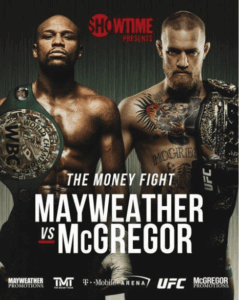 Liddell, Tito Ortiz, Georges St-Pierre, Anderson Silva, and BJ Penn became household names. Rivalries and personal backstories were just as important as the fights themselves. The UFC was marketed like pro wrestling but fought like the Olympics – a perfect formula.
Liddell, Tito Ortiz, Georges St-Pierre, Anderson Silva, and BJ Penn became household names. Rivalries and personal backstories were just as important as the fights themselves. The UFC was marketed like pro wrestling but fought like the Olympics – a perfect formula.
In 2010, the UFC held its first event in Abu Dhabi. Then Australia. Then Brazil, Canada, Sweden, and China. A sport that once struggled to get licensed in New Jersey was now global.
The emergence of crossover stars like Ronda Rousey, Brock Lesnar, and= Conor McGregor only accelerated the growth. McGregor’s 2017 boxing match with Floyd Mayweather, despite not being an MMA bout, was the second highest-grossing combat sports event of all time. It brought even more eyes to the UFC brand.
A $4 Billion Payoff
In 2016, after years of building, grinding, and relentless promotion, the Fertitta brothers sold the UFC to WME-IMG (now Endeavor) for $4.025 billion. The organization that once struggled to get airtime was now one of the most valuable sports properties in the world.
Dana White remained as President, and his work was far from done.
Under his continued leadership, the UFC struck a lucrative streaming deal with ESPN+, launched performance institutes, and even managed to keep events going during the COVID-19 pandemic with Fight Island in Abu Dhabi – showing once again that this sport wasn’t afraid to adapt.
From Barbaric to Beloved: The UFC’s Cultural Shift
Today, the UFC sits alongside the NFL, NBA, and MLB in sports relevance. It dominates YouTube views, crushes social media engagement, and consistently draws massive pay-per-view buys. More importantly, it has redefined what it means to be a professional athlete.
MMA fighters are some of the most well-rounded, disciplined, and inspiring athletes in any sport. From wrestling and boxing to Muay Thai and jiu-jitsu, they master multiple crafts and showcase unbelievable willpower inside the cage.
It’s no longer about brutality. It’s about skill, heart, and survival.
Final Round: What Made the UFC a Giant
At its core, the UFC’s evolution is a story of vision meeting opportunity. The Fertitta brothers saw what others didn’t. Dana White fought like hell to make people care. Together, they turned a near-dead promotion into a global empire.
It took grit, millions in risked capital, and a relentless commitment to the athletes and the sport.
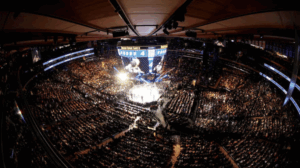
The UFC was never supposed to succeed. And yet, here it stands – not just alive, but dominant.

